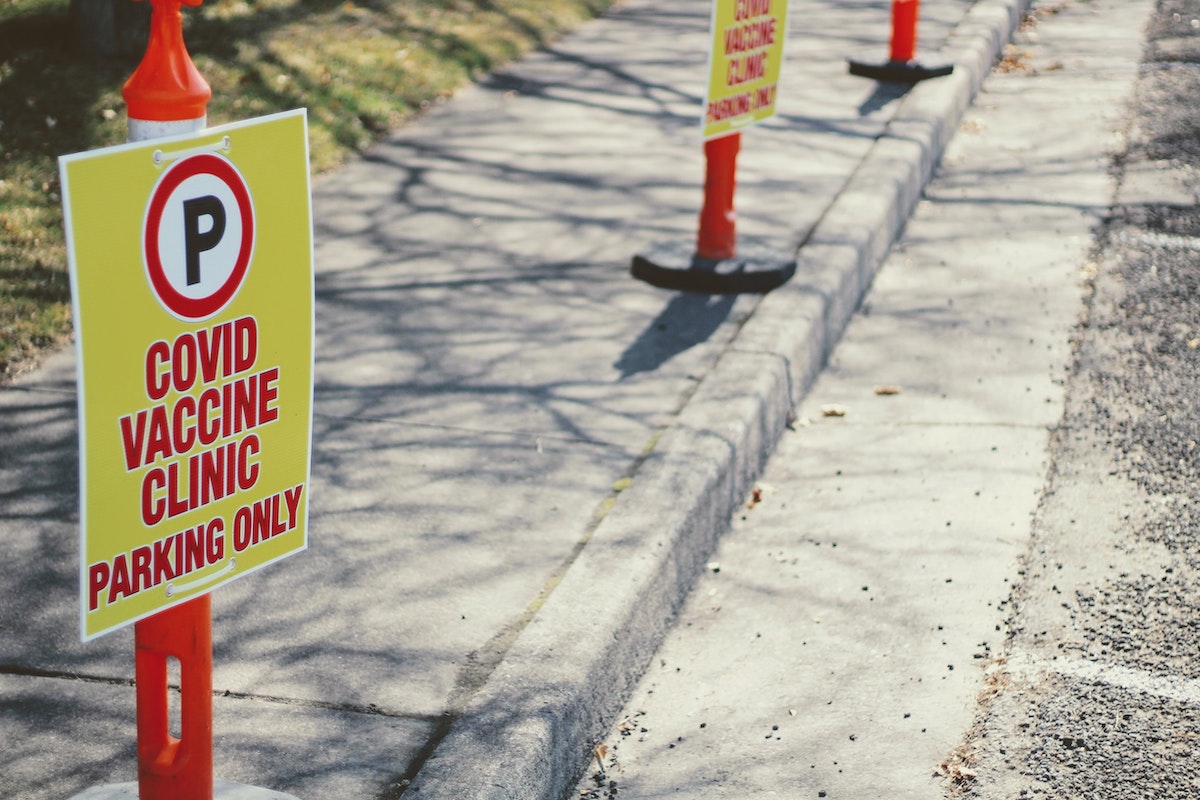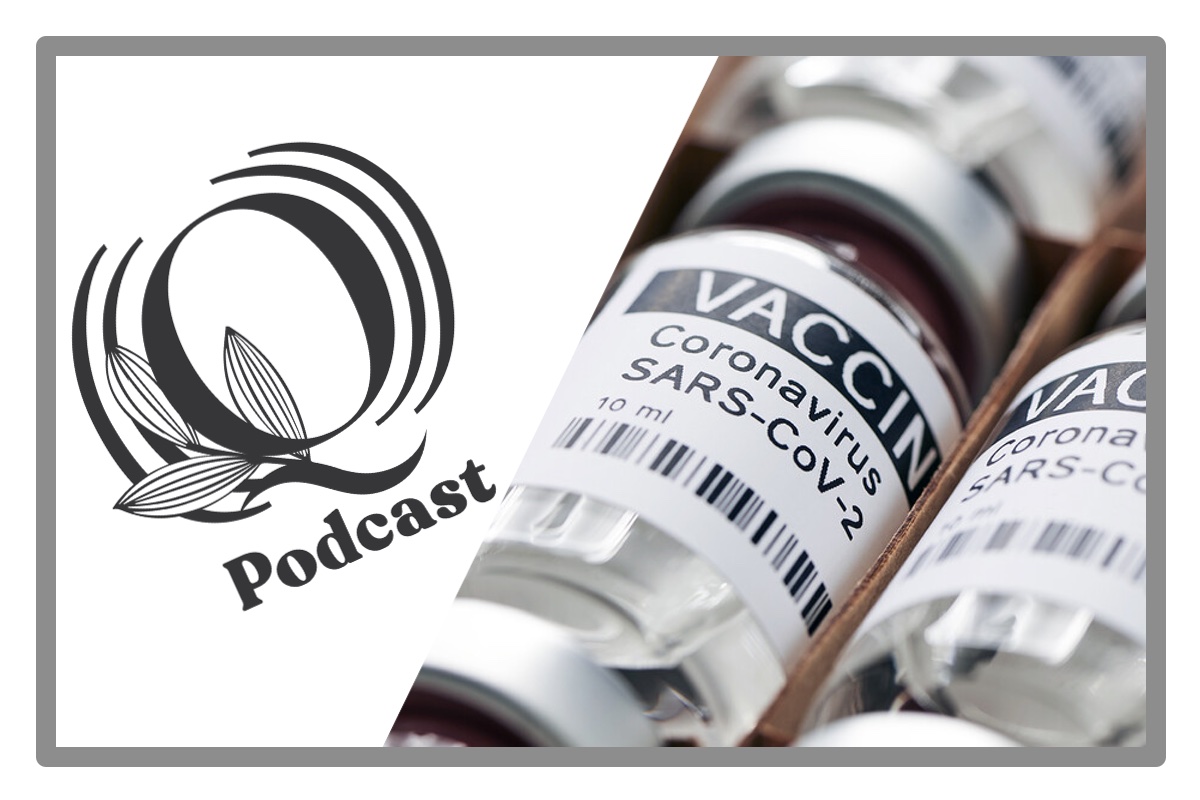COVID-19
The Fear and Fantasy of COVID-19 Vaccination
The politicization and generation of narratives surrounding the coronavirus (and ensuing governmental responses) funneled information flow into partitions based on political affiliation.

This article has been expanded and adapted from prepared remarks delivered at the Researchers.One panel “The Science and Social Impact of COVID-19 Vaccines” on March 25th, 2021.
The current state of COVID-19 vaccine administration in the United States, with its high levels of vaccine hesitancy and skepticism, can be explained by a model composed of three layers of interconnected system(s) malfunction. Disconnect between scientists’ interests and the public’s concerns, the erosion of trust in the peer review process, and politicization of “narrative” around the novel coronavirus. The stakes for a strong and legitimate public health response have not been higher in our lifetime. With novel coronavirus strains on the way to becoming endemic globally, it is crucial that we re-evaluate our systems and institutions with an eye to making the improvements necessary for robust coordinated operation in the future.
Layer one: scientific interest vs. general interest
There is an asymmetry between the interests and incentives of the scientific community and those of the lay public. Scientists maintain a culture in which claims without evidence are dismissed. Methodologically, only positive claims can be substantiated fully and so only these are of interest. There is no glory in disproving false assertions, or worse, conjectures. Since time is limited and attention is scarce, scientists filter claims by the strength of the evidence presented in support of a given claim. The comedic cliché “In God we trust, others must provide data” encapsulates this disposition. Many, if not most, of the unsubstantiated and tenuous claims espoused by the purveyors of vaccine “caution” are summarily ignored as baseless by members of the scientific community.
Lay individuals, however, can be worried by potential side effects or unknown downsides of new vaccines. This conservatism in the face of the unknown is both sound (at least in the context of human evolution) and generally prudent. Yet this natural reaction can be hijacked by fear-mongering, vague appeals, and various forms of emotional manipulation. Even well-meaning individuals can manufacture a near-endless array of plausible claims about theoretical mechanisms for side effects and potential downsides to any given intervention. It is many orders of magnitude more difficult and time-consuming to organize the lines of disconfirmatory evidence for a thorough debunking, as I personally experienced regarding the subject of mRNA vaccine impact on fertility. Moreover, given the interconnected and viral nature of the Internet, dissemination of emotionally powerful content can be expected to have a far vaster reach than any thoughtful or detailed refutation.
Layer two: trust decay in authority
Science as a modern institution (and not a methodology), relies on (1) journals to administer the peer review process and control the quality of published research, and (2) authorities to integrate and translate the vetted scientific findings into policies, guidance, and direction of future research funding.
Journals operate according to a rank-ordered prestige hierarchy largely determined by impact-factor—an indirect measure of average citations per published article in the journal. The more prestigious the journal, the higher the confidence in the field that the strength of the findings published there (stemming from the implied stringent criteria for selection and successful peer review). This, in turn, affords the published paper more credibility, and often more citations, which propagates the “truth signal.”
Yet peer review as an institution (and, by extension, scientific journals) has been rocked by the replication crisis exposed by Professor John Ioannidis in his influential 2005 study. That study found that only 44 percent of highly cited, high-impact medical journal articles were replicated, with 24 percent of studies going unchallenged, 16 percent being contraindicated, and 16 percent losing power in replication. The crisis continues to arouse suspicions about the veracity of published research today. During the summer of 2020, when news of breaking research received unprecedented attention, the two most prestigious medical journals in the world both issued retractions due to unverified data in relation to coronavirus. The Lancet retracted “Hydroxychloroquine or chloroquine with or without a macrolide for treatment of COVID-19: a multinational registry analysis” on June 5th, 2020, having garnered 560 citations. The New England Journal of Medicine retracted “Cardiovascular Disease, Drug Therapy, and Mortality in COVID-19” on June 25th, 2020, after 348 citations.
On March 31st, 2020, the World Health Organization (WHO) officially recommended that the public, excepting actively ill individuals, not wear masks. The WHO director-general, Dr. Tedros Adhanom Ghebreyesus, also criticized border closures in February, saying there was no need for measures that “unnecessarily interfere with international travel and trade.” The WHO reversed their guidance regarding masks on June 6th, 2020.
Public trust in these institutions has been critical to unifying and maintaining a shared grounding for effective truth claims (i.e., for truth signal propagation), and for public funding of scientific research. The highly visible and widely construed failures of the institutions of peer review and health authorities have undermined public trust in scientific authority and published research. This trust is not easily reconstituted.

Layer three: politicization and narrative
The politicization and generation of narratives surrounding the coronavirus (and ensuing governmental responses) funneled information flow into partitions based on political affiliation. The coronavirus arrived in the United States during a presidential election year when polarization of citizens was already at a high point. The public health crisis that the coronavirus pandemic wrought was transformed into a divisive and contentious political issue, where interpretation and selection of facts changed according to political calculus over time.
Politicians unscrupulously and shortsightedly seized on opportunities to score political points, and trust in developing COVID-19 vaccines became a focal point of dispute as the election neared. The Democratic Party sowed hesitancy and mistrust of vaccine development, while the Republican administration sought to bolster trust in the vaccines as the success of Operation Warp Speed neared. On September 6th, 2020, vice presidential candidate Senator Kamala Harris had the following exchange during an interview on CNN with Dana Bash:
BASH: But do you trust that, in the situation where we’re in now, that the public health experts and the scientists will get the last word on the efficacy of a vaccine?
HARRIS: If past is prologue, that they will not, that will be muzzled, they will be suppressed, they will be sidelined, because [Trump] is looking at an election coming up in less than 60 days, and he’s grasping for whatever he can get to pretend that he has been a leader on this issue, when he has not.
On September 24th, 2020, Governor Andrew Cuomo also took a skeptical line and fueled doubt about the competency of the FDA in evaluating vaccine safety, saying “Frankly, I’m not going to trust the federal government’s opinion,” and “New York State will have its own review when the federal government is finished with their review and says it’s safe.” The Republican pushback was encapsulated by Vice President Mike Pence’s rebuke of Harris during their debate on October 7th, 2020: “So the fact that you continue to undermine public confidence in a vaccine, if the vaccine emerges during the Trump administration, I think is unconscionable. And Senator, I just ask you, stop playing politics with people’s lives.”
Scientific journals also stepped into the political fray. On October 1st, 2020, Scientific American endorsed a presidential candidate for the first time in its 175-year history. Seven days later, the New England Journal of Medicine published an editorial that compared America’s political leadership during the pandemic unfavorably to that of China, stating: “The Food and Drug Administration has been shamefully politicized, appearing to respond to pressure from the administration rather than scientific evidence.”
The Democratic Party narrative flipped after the presidential election. On December 9th, 2020, Cuomo asserted that “First, we’re going to have to have a real public education campaign to battle the skepticism…” and “Our priorities are basically tracked the federal government’s suggestion on prioritization.” Harris also became much more supportive of vaccination after being sworn in as vice president. On February 25th, 2021, she announced, “I got vaccinated. I can tell you first of all that these vaccines are safe. It will save your life.”
These double-standards, apparent contradictions, and disparate media narratives on the Left and Right of the political spectrum sowed tribalism and exacerbated the echo-chamber effect of political affiliation. The politicization of coronavirus caused many members of the public to simply follow their preferred political tribe, discounting or ignoring the evidence being generated by observational studies inconvenient to that tribe’s narrative. This further increased the difficulty of transmitting valuable information (signal) from science to action.
Exit, optimism
These three factors combined to produce an interconnected system failure—scientists’ endeavors failed to allay the public’s apprehensions relating to COVID-19 vaccination, and a weak signal was further diluted by distrust in institutions and a political war over narrative. It would therefore be easy to fall into the trap of demanding drastic measures, such as censoring misinformation online, mandating compulsory vaccination (or related coercive policies), and demonizing the minority that chooses to live an unvaccinated life. This would be unwise. Illegitimate and tyrannical policies could serve to further exacerbate coronavirus-related fear, uncertainty, and doubt, and backfire to counteract the intent of such steps.
As terrible as these system malfunctions are, especially if one takes into account their interactions, there are two reasons for optimism. The first, which cannot be stated emphatically enough, is the rapidity with which safe and effective vaccines for COVID-19 became available, with observed efficacy passing 90 percent (for the mRNA-based vaccines by Pfizer/BioNTech and Moderna, as well as the DNA-based Sputnik V abroad) and production scaling up dramatically. This extraordinary generational feat is a credit to the fields of biology, engineering, medicine, and to every productive participant and volunteer involved.
Second, the percentage of Americans who say they will not get a COVID-19 vaccine has dropped from a high of 49 percent in September of 2020 to 30 percent as of February of 2021. According to the latest Pew research, only 15 percent today say they will definitely not get the vaccine, and that figure is trending downward. This inspires hope that the herd immunity threshold (estimated at 70–90 percent) may be reached voluntarily and much sooner than initially expected.
The US now has a unique opportunity to re-establish an apolitical, transparent, legitimate, and revitalized public health infrastructure, and perhaps more vigorous and robust scientific institutions as well. If we choose to meet this challenge, we can build integrated solutions for tomorrow’s crises—from the standards of evidence ensuring replicability of research, to voluntary response coordination, domestic drug manufacturing, perfected national distribution networks, and continuous biosecurity monitoring.






